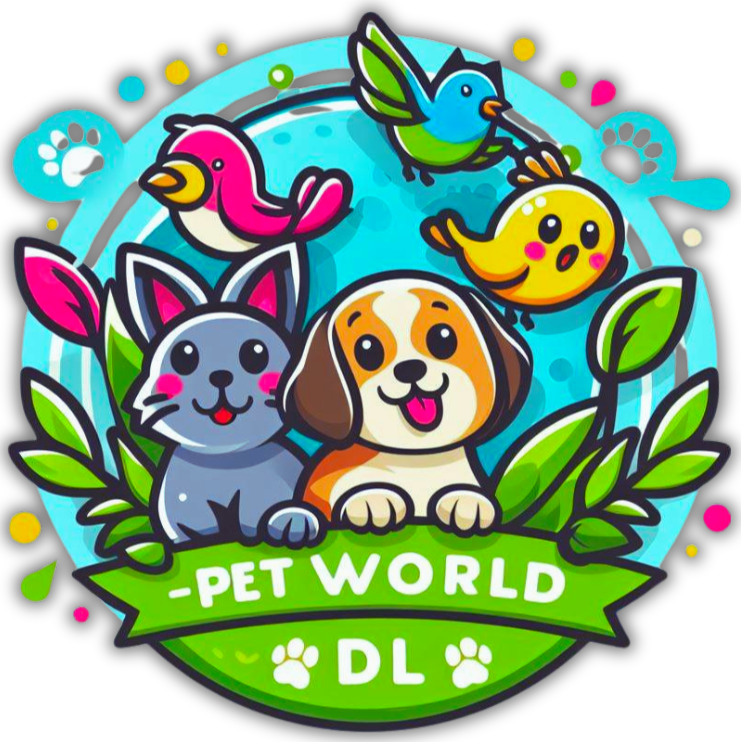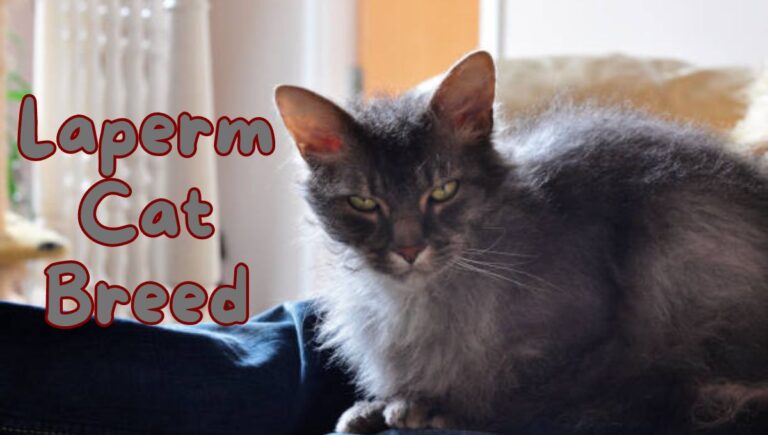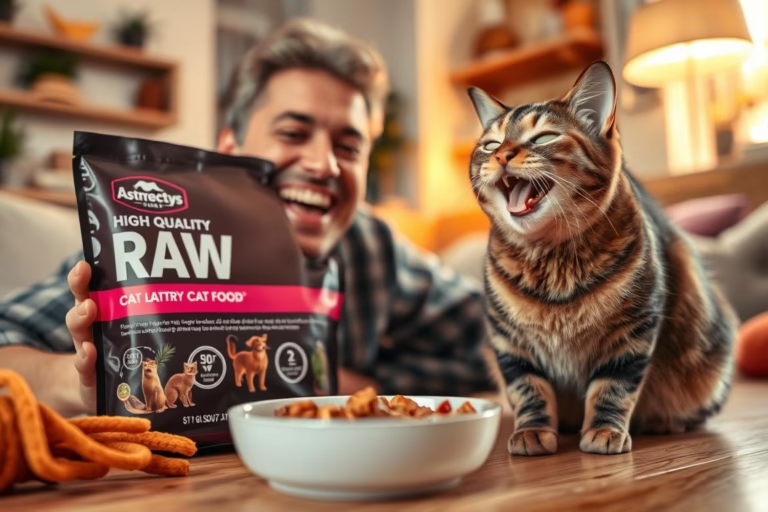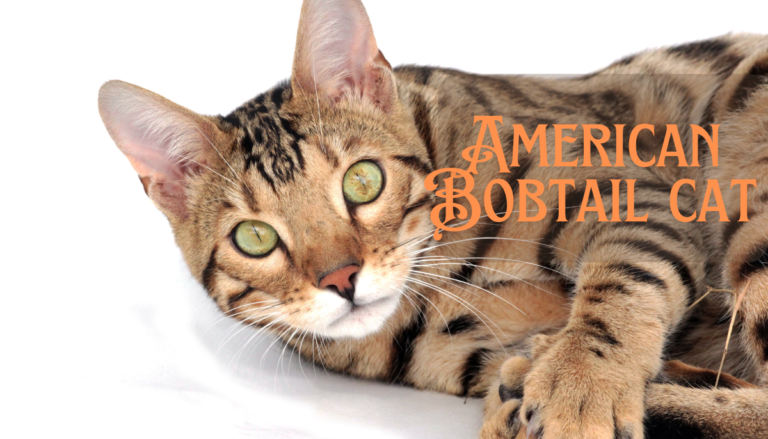Snowshoe Cat Breed
The Snowshoe cat breed is a captivating and distinct feline known for its striking appearance and endearing personality. The breed’s name, “Snowshoe,” is derived from the distinctive markings on its paws, resembling the shape of a snowshoe.
These cats possess a unique combination of features that set them apart in the feline world. Snowshoe cats are characterized by their unique coat pattern, which typically consists of solid-colored bodies with contrasting white “boots” or “gloves” on their feet.
These markings give them a distinctive appearance reminiscent of a snowy landscape. One of the most captivating features of the Snowshoe breed is their striking blue eyes, which add to their charm and allure. The contrast between their dark facial markings and bright blue eyes creates a mesmerizing effect.
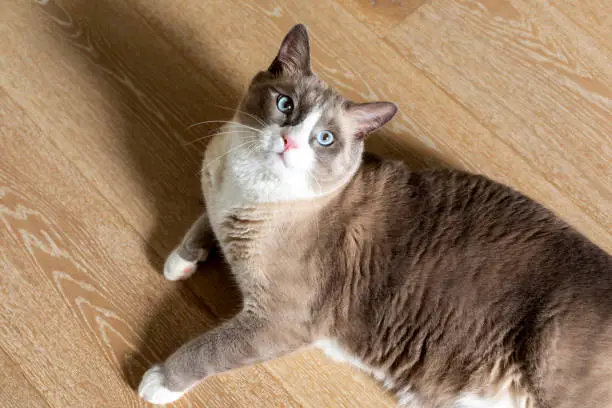
Snowshoe cats are known for their affectionate and sociable nature. They form strong bonds with their human companions and enjoy being part of the family. Snowshoes are often described as outgoing, playful, and intelligent, making them wonderful companions for households with children and other pets. Snowshoe cats typically have a moderate build, with a muscular body and medium-sized legs.
They are agile and athletic, capable of displaying graceful movements and playful antics. Snowshoe breed has a short, dense coat that requires minimal grooming. Their coat is easy to care for, making them suitable for owners who prefer low-maintenance pets. Overall, the Snowshoe cat breed combines striking physical features with a warm and engaging personality, making them cherished companions for cat lovers worldwide.
Table of Contents
I. Origin and History of Snowshoe Cat Breed :
Breed’s Origins and Historical Significance :
- The Snowshoe cat breed originated in the United States in the 1960s through selective breeding efforts.
- Dorothy Hinds-Daugherty, a Siamese breeder from Philadelphia, Pennsylvania, is credited with developing the breed.
- Hinds-Daugherty crossed a Siamese cat named “Ling” with an American Shorthair cat with white markings, resulting in the distinctive Snowshoe pattern.
- The breed’s name “Snowshoe” comes from the white markings on its paws, resembling the shape of snowshoes.
Geographical Region of Origin :
- The Snowshoe breed’s development primarily took place in the United States.
- The breed’s creation aimed to combine the elegance of Siamese cats with the unique white markings seen in American Shorthairs.
- The geographical region of origin influenced the breed’s characteristics, resulting in a cat with a striking appearance and endearing personality well-suited for domestic life.
Folklore and Legends :
- While there are no specific folklore or legends surrounding the Snowshoe breed’s development, its origin story reflects the ingenuity and creativity of cat breeders.
- The blend of Siamese and American Shorthair ancestry contributes to the Snowshoe’s sleek body, striking blue eyes, and distinctive white markings on its feet.
- This combination of characteristics has resulted in a cat breed known for its unique appearance and gentle temperament, making it a cherished companion for cat lovers worldwide.
II. Physical Characteristic of Snowshoe Cats :
| Height | Snowshoe cats typically have a medium-sized build with average height. |
| Weight | They usually weigh between 7 to 12 pounds (3 to 5.5 kg) on average. |
| Life Span | Snowshoe cats have a lifespan of around 12 to 16 years, but with proper care, some can live even longer. |
| Good With | Snowshoe cats are known to be good with families, including children and other pets, if introduced properly. |
| Temperament | They are affectionate, social, and often described as “people-oriented.” They enjoy being around their humans and are known for forming strong bonds with their owners. |
| Intelligence | Snowshoe cats are considered to be intelligent and trainable. They can learn tricks and enjoy interactive play. |
| Shedding Amount | They have a moderate shedding level. Regular grooming can help manage loose hair. |
| Grooming | Snowshoe cats have a short coat that requires minimal grooming. Weekly brushing is usually sufficient to remove loose hair and keep their coat shiny. |
| Exercise Needs | They are moderately active cats that enjoy playtime and interactive toys. Providing opportunities for exercise and mental stimulation is important for their well-being. |
| Energy Level | Snowshoe cats have a moderate energy level. They enjoy playtime but also appreciate lounging and cuddling with their owners. |
| Meowing Level | Snowshoe cats are known for having a moderate to low meowing level. |
| Drool amount | Snowshoe cats typically don’t drool excessively. |
| Coat Length/Texture | They have a short, sleek coat that lies close to the body. |
| Colors | Snowshoe cats have distinctive markings, usually with a white body and dark points on the ears, face, paws, and tail. The points can be blue, seal, chocolate, lilac, or lynx (tabby) points. |
| Patterns | They often have a pattern called “bicolor,” with white on the body and darker points on the extremities. |

Detailed Physical Characteristic of the Snowshoe Cat Breed :
Size :
Snowshoe cats have a medium-sized, muscular build with a balanced body structure.
Coat Type :
They have a short, smooth, and close-lying coat that is soft to the touch.
Color Variations :
Snowshoe cats are known for their distinctive color point markings, usually with a white body and darker points on the ears, face, paws, and tail. The points can come in various colors:
- Seal points: Dark brown points
- Blue points: Gray-blue points
- Chocolate points: Warm brown points
- Lilac points: Pale gray points with a pinkish hue
- Lynx (tabby) points: Dark stripes on the points
Measurements and Weight Ranges :
- Males:
- Weight: 9 to 12 pounds (4 to 5.5 kg)
- Height: 9 to 10 inches (23 to 25 cm) at the shoulder
- Females:
- Weight: 7 to 10 pounds (3 to 4.5 kg)
- Height: Slightly smaller than males, typically 8 to 9 inches (20 to 23 cm) at the shoulder
Coat Texture and Length :
Coat Texture and Length: Snowshoe cats have a short, sleek coat with a fine texture. The coat lies close to the body and requires minimal grooming.
Common Coat Patterns :
The most common coat pattern for Snowshoe cats is bicolor, where the body is predominantly white, and the points are darker. The color points are typically distributed on the ears, face mask, legs, and tail.
Distinctive Features :
- Face: Snowshoe cats have a distinctive inverted “V” or “H” pattern on their face, created by the dark points contrasting with the white blaze on their muzzle.
- Feet: One of the most characteristic features of Snowshoe cats is their white “snowshoe” markings on their paws, which gave the breed its name.
- Tail: Their tail is usually medium-length, in proportion to the body, and may have darker coloration towards the tip.
These distinctive features, along with their unique color points and charming personalities, set Snowshoe cats apart from other breeds.
III. Temperament and Personality of Snowshoe Cats :
Typical Temperament and Personality Traits :
- Affectionate: Snowshoe cats are highly affectionate and enjoy being around their human companions. They often form strong bonds with their family members and thrive on attention and affection.
- Social: These cats are typically very social and enjoy interacting with both humans and other pets. They are known for their friendly and outgoing nature.
- Playful: Snowshoe cats have a playful and curious disposition. They enjoy interactive play and toys that stimulate their mind and body.
- Intelligent: Snowshoes are considered intelligent cats that can learn tricks and enjoy problem-solving activities.
- Vocal: While not excessively vocal, Snowshoe cats may engage in occasional “conversation” with their owners, expressing their needs or desires through gentle meows.
- Adaptable: They tend to adapt well to different environments and lifestyles, making them suitable for various households, including families with children or other pets.
Common Behavioral Traits :
- Loyalty: Snowshoe cats are loyal to their families and may become attached to a particular person within the household.
- Demanding Attention: Due to their affectionate nature, Snowshoe cats may seek out attention from their owners and may become vocal or display attention-seeking behaviors if they feel neglected.
- Playfulness: They enjoy playtime and may become bored or restless without enough mental and physical stimulation.
- Sensitive: Snowshoe cats may be sensitive to changes in their environment or routine, so they may require some time to adjust to new situations or surroundings.
- Territorial: Some Snowshoe cats may exhibit territorial behaviors, particularly if they feel their space is being invaded by other pets or unfamiliar individuals.
Managing and Addressing Breed Specific Behavioral Issues :
- Attention and Affection: Ensure that you provide plenty of attention and affection to your Snowshoe cat to prevent them from feeling neglected. Regular play sessions and interactive toys can also help keep them mentally stimulated.
- Routine and Stability: Maintain a consistent routine and environment for your Snowshoe cat to help reduce stress and anxiety. Introduce changes gradually and provide plenty of opportunities for them to explore and adjust.
- Training and Socialization: Start training and socialization early to encourage positive behaviors and prevent potential issues such as aggression or anxiety. Positive reinforcement techniques can be effective in shaping desired behaviors.
- Consultation: If you encounter any behavioral issues that you’re unsure how to address, consider seeking advice from a veterinarian or professional animal behaviorist who can provide personalized guidance and support.
With proper care, attention, and understanding of their unique temperament, Snowshoe cats can make wonderful and rewarding companions for families and ind
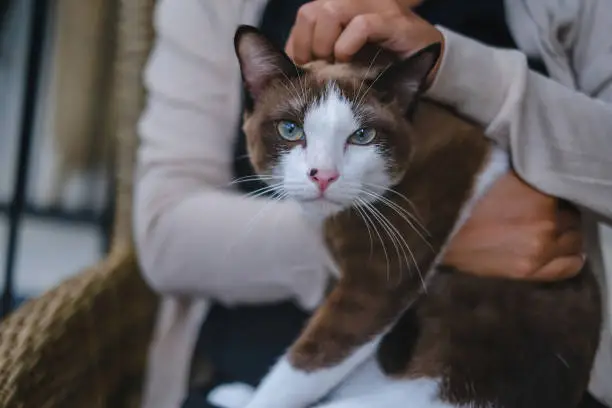
IV. Care and Maintenance of Snowshoe Cat Breed :
Grooming Needs :
- Coat: Snowshoe cats have a short, sleek coat that requires minimal grooming. Weekly brushing with a soft-bristled brush can help remove loose hair and prevent matting.
- Nails: Trim your cat’s nails regularly to prevent them from becoming too long and causing discomfort or potential injury.
- Ears: Check your cat’s ears regularly for signs of wax buildup or infection. Clean them gently with a damp cotton ball if necessary, but avoid inserting anything into the ear canal.
- Teeth: Brush your cat’s teeth regularly to maintain oral hygiene and prevent dental issues. Use a cat-specific toothbrush and toothpaste approved by your veterinarian.
Health Consideration :
- Regular veterinary check-ups are essential to monitor your Snowshoe cat’s overall health and well-being.
- Snowshoe cats may be prone to certain health issues, including:
- Respiratory infections: Due to their short noses, Snowshoe cats may be more susceptible to respiratory infections. Keep their environment clean and free from irritants.
- Dental problems: Like many breeds, Snowshoe cats can develop dental issues, so dental care is crucial.
- Obesity: Monitor your cat’s weight and diet to prevent obesity, which can lead to various health problems.
- Keep up with vaccinations, flea and tick prevention, and deworming to protect your cat from common parasites and diseases.
Nutrition :
- Provide a balanced and nutritious diet tailored to your Snowshoe cat’s age, weight, activity level, and health status.
- Choose high-quality cat food that meets the nutritional requirements recommended by veterinarians.
- Consider feeding a combination of wet and dry food to provide variety and ensure adequate hydration.
- Avoid overfeeding and monitor portion sizes to prevent obesity.
Exercise :
- Snowshoe cats are moderately active and enjoy playtime and interactive toys. Provide opportunities for exercise and mental stimulation to keep them physically and mentally healthy.
- Interactive play sessions, puzzle toys, and scratching posts can help satisfy their natural instincts and keep them entertained.
Additional Tips :
- Create a safe and stimulating environment for your Snowshoe cat with plenty of vertical space, hiding spots, and scratching surfaces.
- Provide fresh water at all times and clean the water bowl regularly.
- Keep your cat indoors to protect them from potential dangers such as traffic, predators, and contagious diseases.
- Spend quality time bonding with your Snowshoe cat through play, cuddling, and affectionate interactions.
By providing proper care, attention, and a nurturing environment, you can help ensure that your Snowshoe cat lives a happy, healthy, and fulfilling life.
V. Suitability of Snowshoe Cats :
Compatibility with Children and Other Animals :
- Children: Snowshoe cats are generally well-suited for families with children. They are known for their friendly and sociable nature, making them excellent companions for kids. However, it’s essential to teach children how to interact with cats respectfully and gently to prevent accidental injury to both the cat and the child.
- Other Pets: Snowshoe cats typically get along well with other pets, including dogs and other cats, especially if they are introduced properly and gradually. Their social and adaptable nature allows them to coexist harmoniously with other animals in the household.
Special Considerations for Multi-Pet Households :
- Introductions: When introducing a Snowshoe cat to existing pets, it’s essential to do so gradually and in a controlled manner. Allow the animals to become familiar with each other’s scents before allowing direct interactions. Supervise initial interactions closely and intervene if any signs of aggression or tension arise.
- Positive Reinforcement: Use positive reinforcement techniques, such as treats and praise, to reward calm and friendly behavior between pets. Create positive associations with each other’s presence to promote bonding and acceptance.
Environmental Needs :
- Space: While Snowshoe cats don’t require a large amount of space, they do appreciate having vertical territory to explore and perch on. Providing cat trees, shelves, and climbing structures can satisfy their natural instincts and provide them with opportunities for exercise and enrichment.
- Special Environment: Snowshoe cats adapt well to various living environments, including apartments, provided they have access to adequate mental and physical stimulation. Ensure they have access to toys, scratching posts, and interactive playtime to prevent boredom.
- Temperature: Snowshoe cats are generally comfortable in moderate room temperatures, similar to what humans prefer. Avoid exposing them to extreme heat or cold, and provide a comfortable indoor environment year-round.
Overall, Snowshoe cats are well-suited for families and multi-pet households due to their friendly, adaptable, and sociable nature. With proper introductions, supervision, and environmental enrichment, they can thrive in a variety of living situations and make wonderful additions to any home.
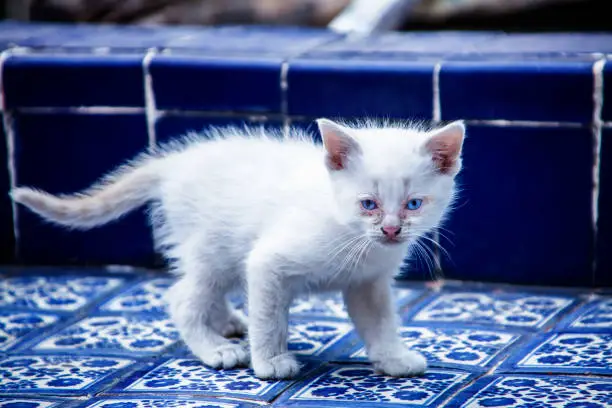
VI. Adoption and Breeder Consideration of Snowshoe Cat Breed :
Adoption from Shelters or Rescue Organizations :
- Encouraging adoption from shelters or rescue organizations is a compassionate choice that provides a loving home to cats in need.
- Benefits of adopting a cat from a shelter include:
- Saving a life: By adopting from a shelter, you’re giving a homeless cat a second chance at life.
- Supporting animal welfare: Adoption helps reduce the number of cats euthanized in shelters and supports the efforts of rescue organizations.
- Finding the right match: Shelters often have a variety of cats available for adoption, allowing you to find a cat that matches your lifestyle and personality.
- Pre-screened health and temperament: Shelter cats are usually evaluated for health and temperament before being put up for adoption, providing you with some assurance of their well-being.
Selecting a Reputable Breeder :
- If you decide to purchase a Snowshoe cat from a breeder, it’s essential to choose a reputable and ethical breeder who prioritizes the health and well-being of their cats.
- Look for breeders who:
- Are registered with reputable cat breeding organizations and adhere to their code of ethics.
- Conduct health screenings for genetic disorders common in the breed, such as hypertrophic cardiomyopathy (HCM).
- Provide proper socialization and care for their cats and kittens.
- Are transparent about their breeding practices and willing to answer your questions.
- Visit the breeder’s facility in person if possible to ensure the cats are raised in a clean and healthy environment.
Cost Consideration and Potential Adoption Fees :
- Adoption fees for shelter cats typically range from $50 to $200, depending on the organization and the cat’s age, health, and other factors.
- Purchasing a Snowshoe cat from a reputable breeder can cost anywhere from $500 to $1500 or more, depending on the cat’s pedigree, lineage, and quality.
- In addition to the initial cost of adoption or purchase, consider ongoing expenses such as veterinary care, food, grooming, and supplies.
It’s essential to weigh the financial considerations along with the ethical and moral aspects when deciding whether to adopt or purchase a Snowshoe cat. Regardless of the source, providing a loving and caring home is the most important factor in ensuring the well-being of your feline companion.
VII. Conclusion
Snowshoe cats are a unique and charming breed known for their striking appearance and delightful personality. With their distinctive color point markings, friendly demeanor, and playful nature, Snowshoe cats make wonderful companions for families and individuals alike.
Their medium-sized build, short coat, and balanced body structure contribute to their overall elegance and grace. Snowshoe cats are affectionate, social, and intelligent, forming strong bonds with their human companions and enjoying interactive play and attention.
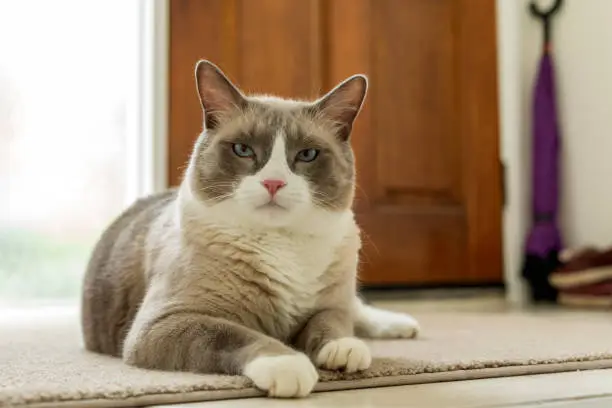
When considering bringing a Snowshoe cat into your home, it’s crucial to prioritize responsible ownership and provide proper care. Whether adopting from a shelter or purchasing from a reputable breeder, ensuring the well-being of your feline friend should be the top priority. This includes providing a loving and nurturing environment, regular veterinary care, a balanced diet, and opportunities for mental and physical stimulation.
Prospective owners should carefully consider all aspects of cat ownership, including the financial commitment, time investment, and lifestyle adjustments required to accommodate a Snowshoe cat. By understanding the breed’s needs and characteristics and committing to responsible ownership, you can provide a happy and fulfilling life for your Snowshoe companion while enjoying the joys of feline companionship for years to come.
FAQ about Snowshoe Cat Breed :
Are Snowshoe cats good with children and other pets?
Yes, Snowshoe cats are generally good with children and other pets. They are friendly and adaptable, making them suitable companions for families and multi-pet households.
What health issues are common in Snowshoe cats?
While generally healthy, Snowshoe cats may be prone to certain health issues, including respiratory infections and dental problems. Regular veterinary check-ups and proper dental care are essential for maintaining their health.
How long do Snowshoe cats live?
Snowshoe cats have an average lifespan of around 12 to 16 years, but with proper care, some can live even longer.
How much does a Snowshoe cat cost?
The cost of a Snowshoe cat can vary depending on factors such as pedigree, lineage, and quality. Adoption fees for shelter cats typically range from $50 to $200, while purchasing from a reputable breeder can cost anywhere from $500 to $1500 or more.
Where did the Snowshoe cat breed originate?
The Snowshoe cat breed originated in the United States in the 1960s. They are a result of breeding between Siamese and American Shorthair cats.
